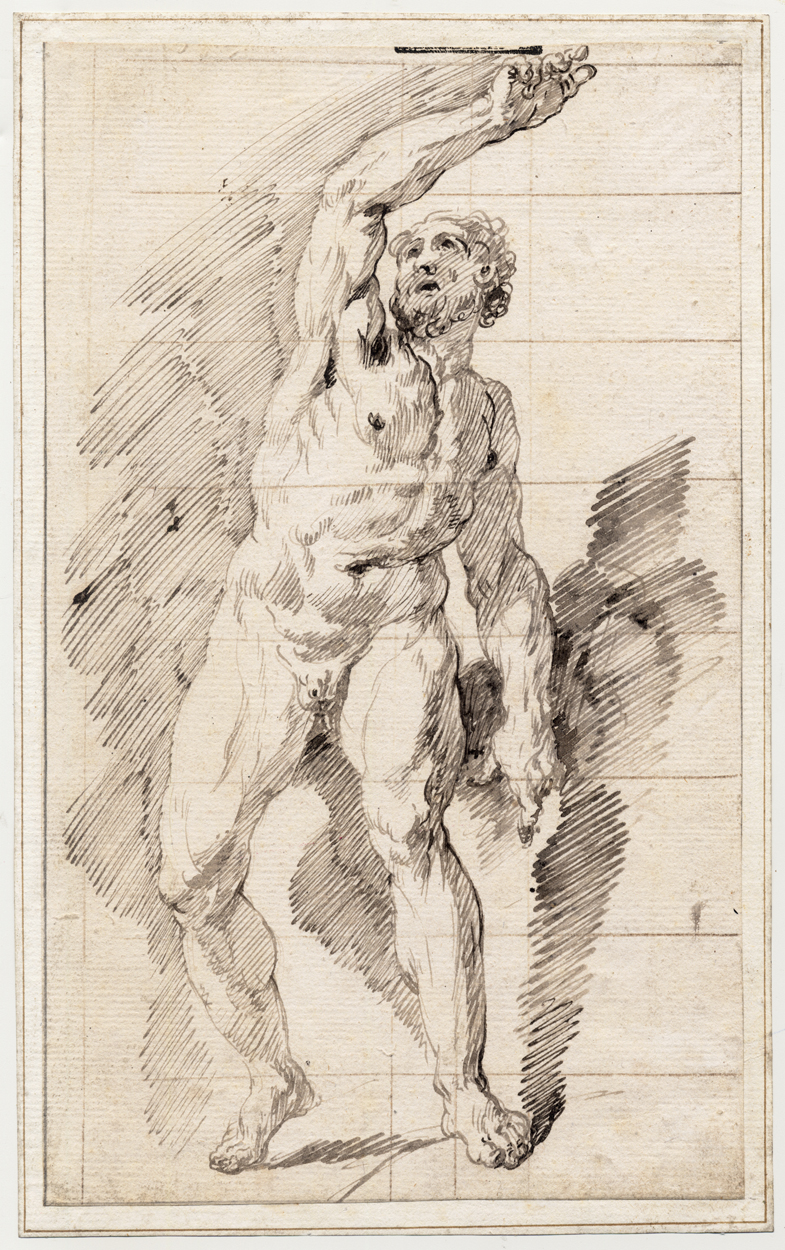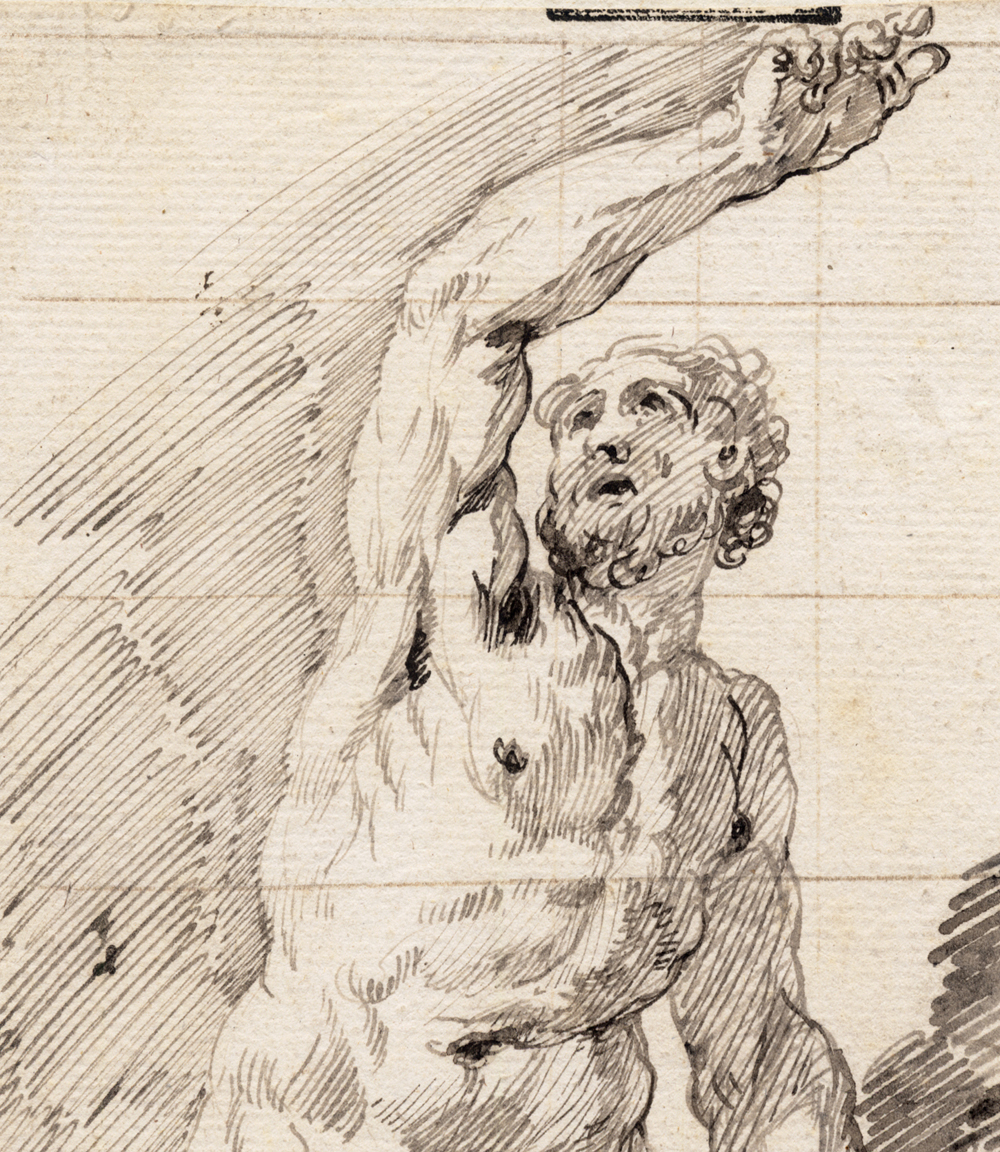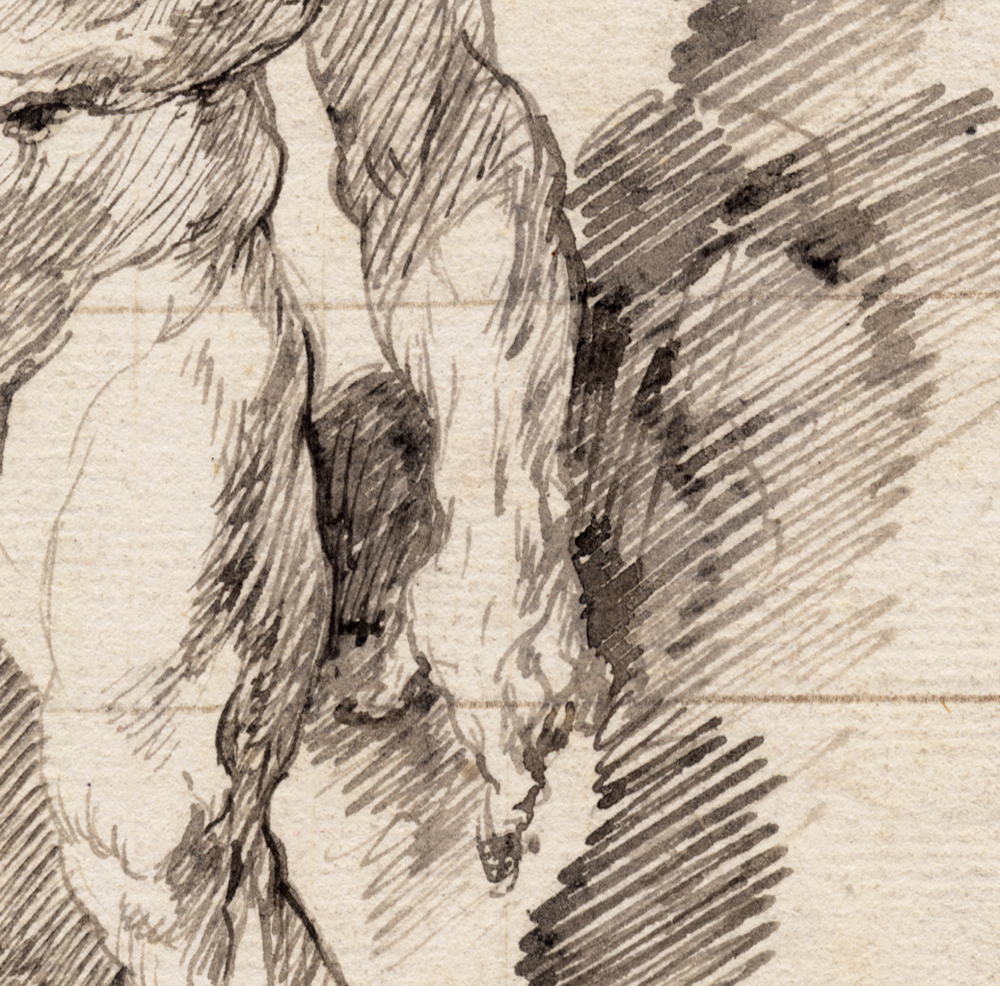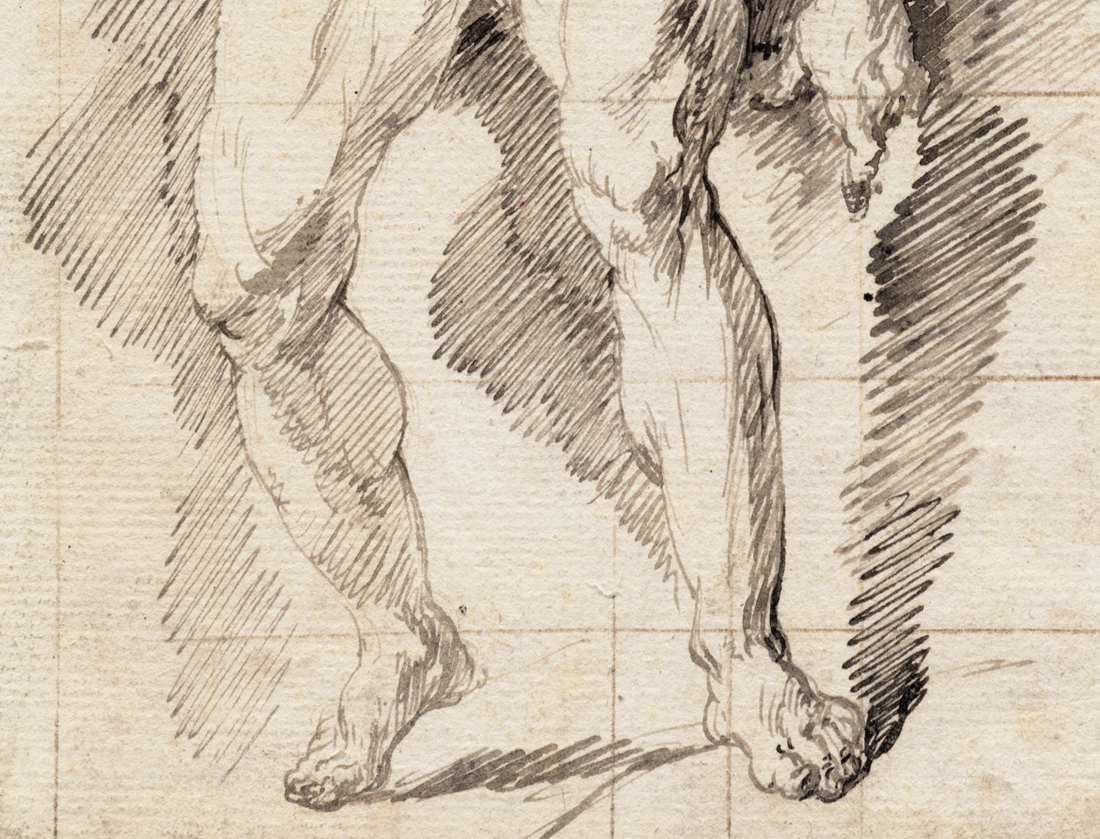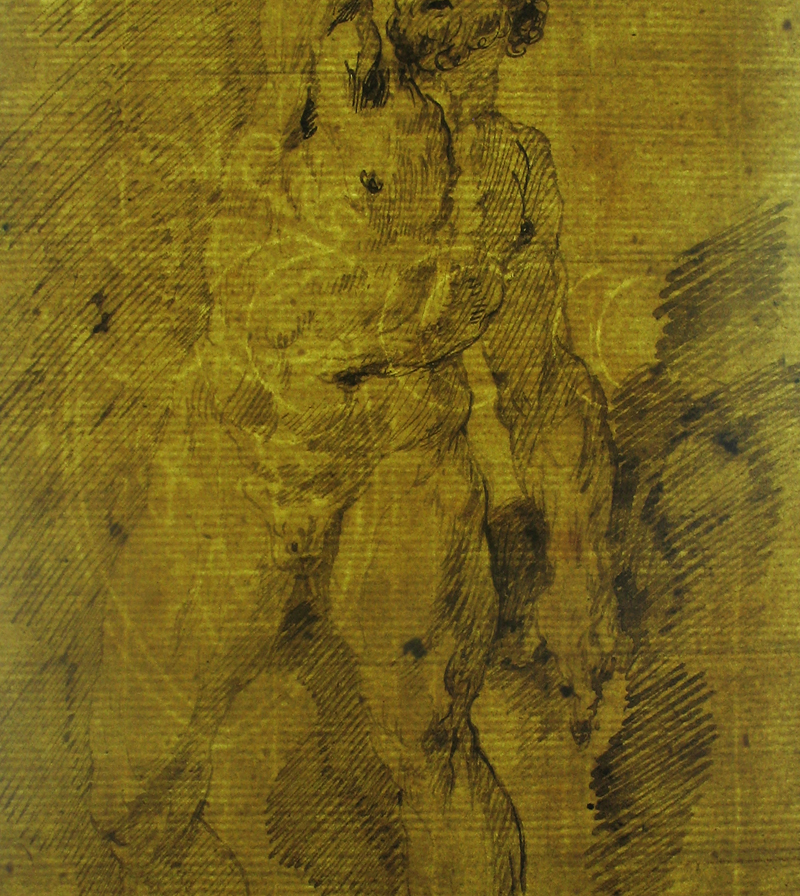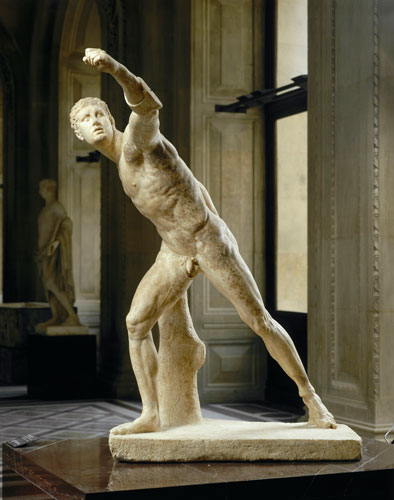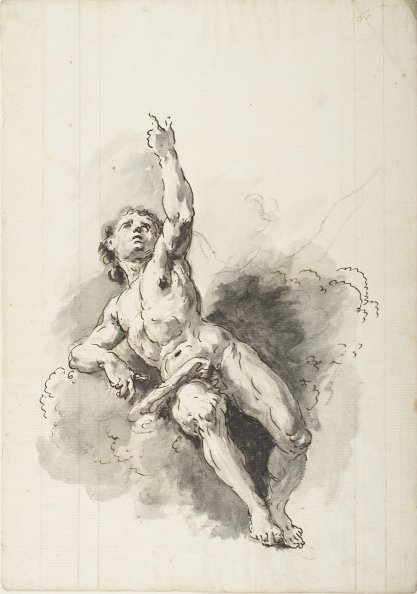FRANCESCO FONTEBASSO (Venice 1707 – 1769 Venice)
Francesco Fontebasso (Venice 1707 – 1769 Venice)
A Male Nude with his Arm Raised
Pen and grey-brown ink, squared in brown chalk, partial framing lines in graphite, watermark three crescent moons, 285 x 171 mm (11.2 x 6.7 inch); laid down onto an 18th-century sheet of paper with framing lines in brown ink and watermark crowned shield
Provenance
~ With Louis Meier, London
~ From whom purchased in 1955 by Ralph Holland (1917-2012), until 2013
Exhibited
~ Old Master Drawings, from the XVIth to the XIXth century, Newcastle upon Tyne (Hatton Gallery) 1960, no. 48
~ Old Master Drawings, Newcastle upon Tyne (Hatton Gallery) 1964, no. 80
~ Italian and Other Drawings, 1500-1800, Newcastle upon Tyne (Hatton Gallery) 1974, no. 111, reproduced pl. XXXVIII
~ Italian and Other Drawings 1500-1800, London (Courtauld Institute Galleries) 1975, no. 71
Literature
M. Magrini, 'Francesco Fontebasso - I Disegni,' Saggi e Memorie, vol. 17, 1990, p. 177, no. 49, reproduced p. 360, fig. 80
***
Francesco Fontebasso has been described as the last outstanding representative of Italian monumental painting. The young Francesco trained with Sebastiano Ricci, but it was another Venetian artist, Giovanni Battista Tiepolo, who probably had the greatest influence on his work.1 Early in his training, Fontebasso studied Tiepolo’s frescoes and eventually came in contact with the venerated artist. By the 1720s the artist had studied in Rome and Bologna, where he underwert the influence of Bolognese tenebrism, but eventually settled in Venice, where he ireasingly emulated Tiepolo in his palette and compositional designs.
By the 1740s, Fontebasso had established himself as a leading artist in Venice. Mainly active as a decorator of churches and palaces, Fontebasso worked both in fresco and on canvas. In 1734 he frescoed the two main sections of the ceiling of the church of the Gesuiti in Venice with Angels Appearing to Abraham and Elijah Carried to Heaven. Fontebasso became a founding member of the Accademia Venezia in 1755, and was elected its president in 1768.
In 1761, Fontebasso was invited by Empress Catherine to visit St Petersburg, and produced ceiling paintings and decorations for the Winter Palace. Sadly, like several other of his major decorative projects, this work was eventually destroyed. Fontebasso returned to Venice in 1768 and was elected president of the Académie Royale. He died the following year.
Fontebasso produced pen-and-wash drawings inspired by Tiepolo, and his drawings in pen and ink, such as the present work, are highly distinctive. It has been noted by Marina Magrini2 that the pose of our figure derives from the antique statue known as the Borghese Warrior (fig.).3 She further suggested that a drawing by Fontebasso in pen and wash in Princeton was also inspired by the same sculpture (fig.).4
SOLD
1. For the artist, see E. Magrini, Francesco Fontebasso, Vicenza 1988; I. Fenyö, ‘Deux dessins inconnus de Fontebasso’, Bulletin du Musée Hongrois des Beaux-Arts 1956, pp. 48-57; and P. Zampetti, Dictionary of Venetian painters, 18th century, 1971, pp. 42-43.
2. M. Magrini, 'Francesco Fontebasso - I Disegni,' Saggi e Memorie, vol. 17, 1990, p. 177, no. 49, p. 360. Ralph Holland, the noted scholar and former owner of our sheet, has pointed out that the same model appears in a drawing from Benno Geiger's collection, exhibited London, P. & D. Colnaghi, Old Master Drawings, 1955, no. 77.
3. More properly identified as Agasias of Ephesus, son of Dositheus, also often referred to as the Fighting Warrior or Borghese Gladiator; the best known version of this famous sculpture is in the Louvre, c. 100 B.C.E. (purchased 1807).
4. Pen and dark brown ink, with dark brown and grey wash over black chalk, 38 x 26.6 cm, Princeton University Art Museum, Bequest of Dan Fellows Platt, Class of 1895, inv. No. x1948-780.
